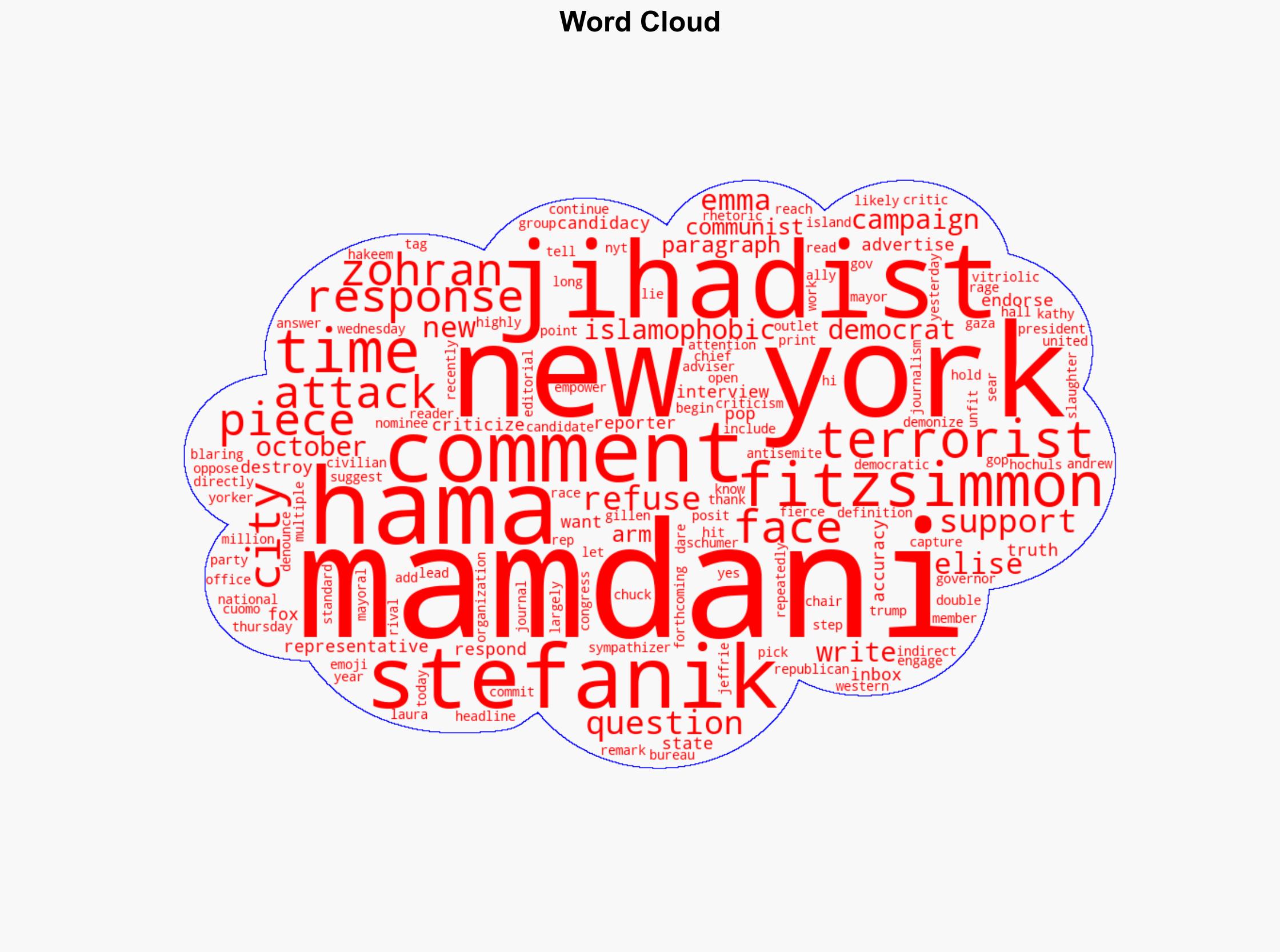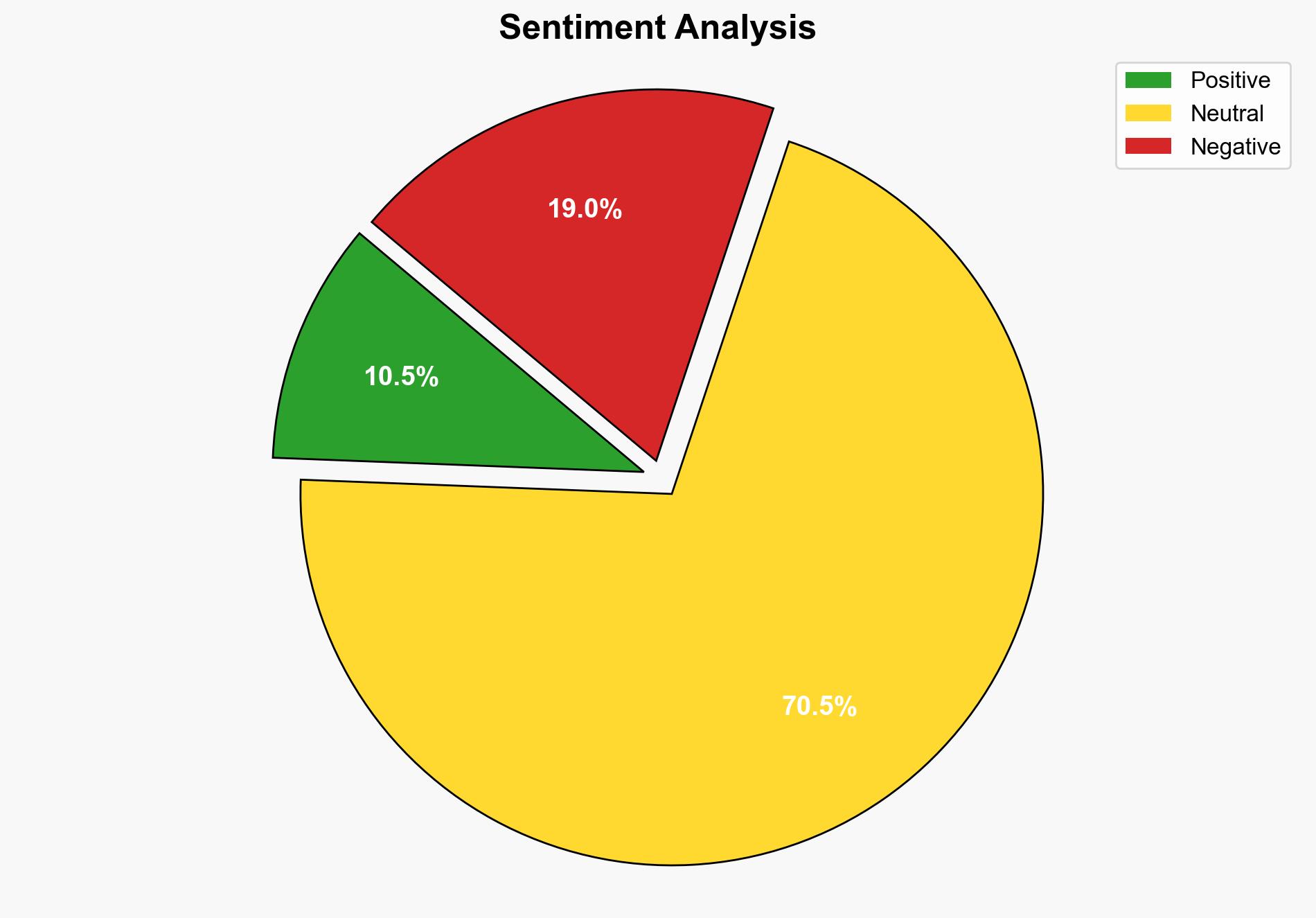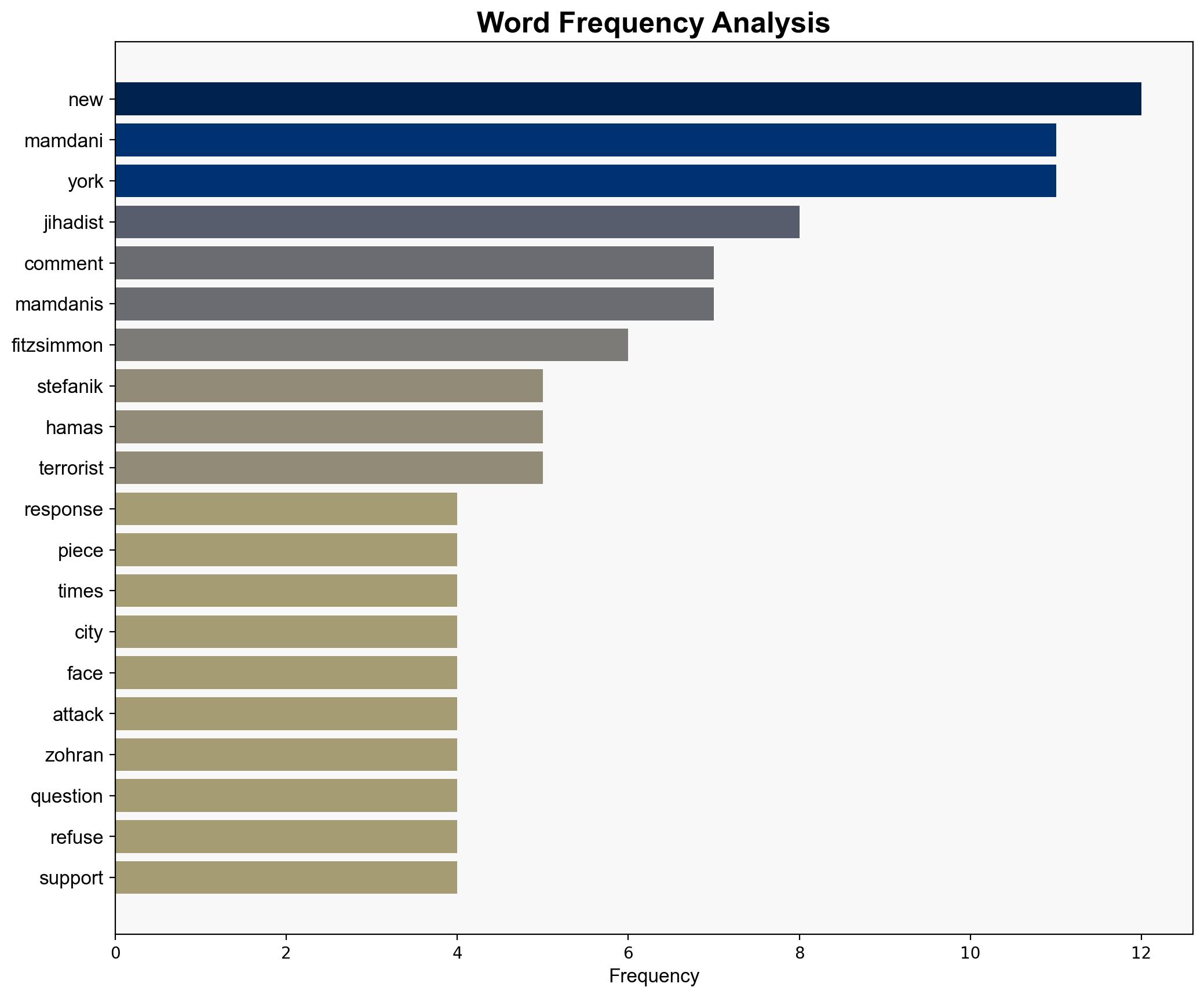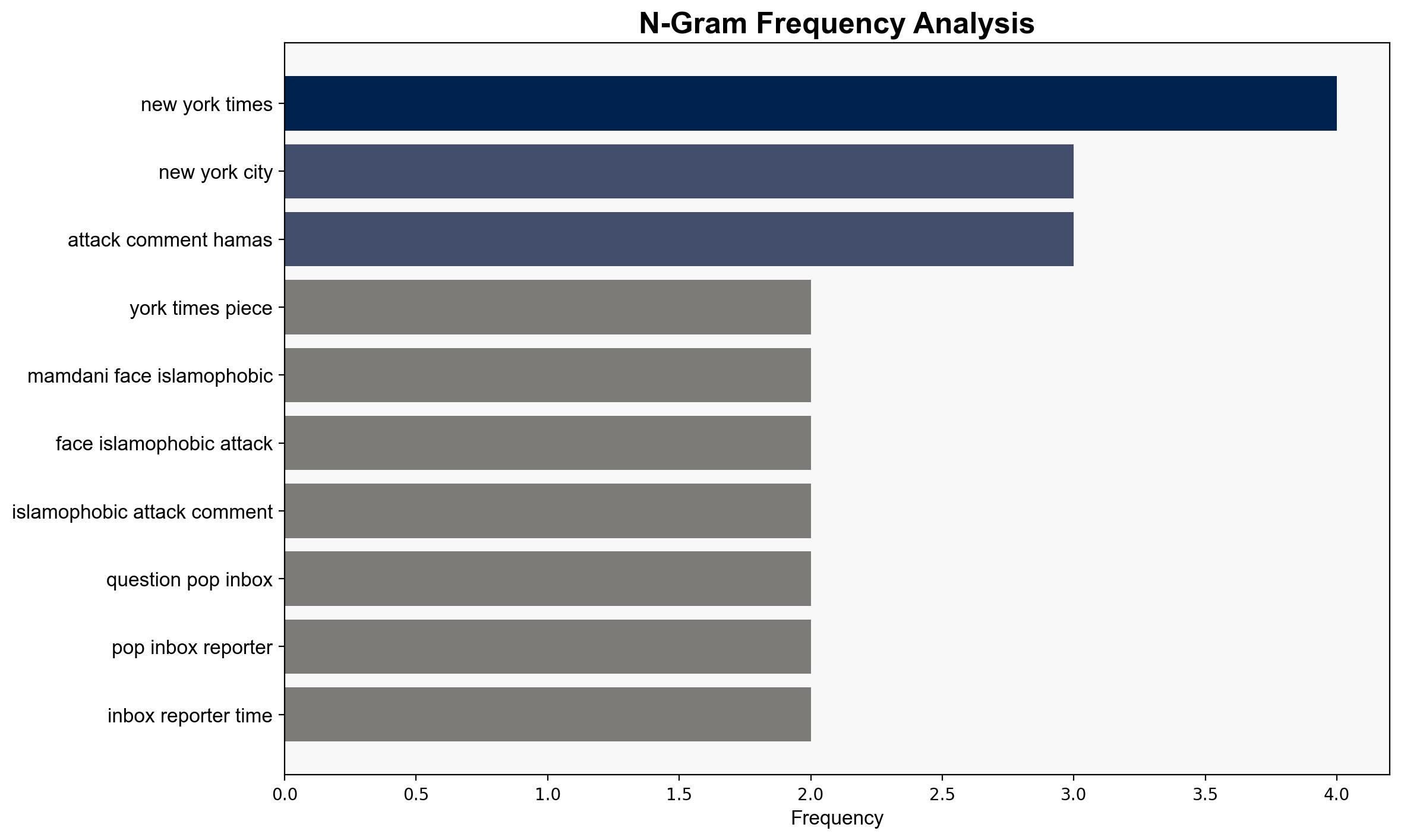Elise Stefanik Calls Mamdani a ‘Jihadist Communist’ in Response to NYT Hit Piece on His Critics – Westernjournal.com
Published on: 2025-10-18
Intelligence Report: Elise Stefanik Calls Mamdani a ‘Jihadist Communist’ in Response to NYT Hit Piece on His Critics – Westernjournal.com
1. BLUF (Bottom Line Up Front)
The most supported hypothesis is that Elise Stefanik’s comments are strategically aimed at mobilizing political support by framing Zohran Mamdani as a security threat, leveraging heightened public sensitivity to terrorism. Confidence in this assessment is moderate due to the lack of direct evidence linking Mamdani to extremist activities. Recommended action includes monitoring political discourse for escalation and assessing potential impacts on public sentiment and electoral outcomes.
2. Competing Hypotheses
1. **Hypothesis A**: Elise Stefanik’s comments are a calculated political strategy to undermine Zohran Mamdani’s candidacy by associating him with terrorism, thereby appealing to security-conscious voters.
2. **Hypothesis B**: The comments reflect genuine concern over Mamdani’s perceived sympathies towards extremist groups, driven by his public statements and associations.
Using ACH 2.0, Hypothesis A is better supported as it aligns with Stefanik’s political alignment and history of leveraging national security issues. Hypothesis B lacks substantial evidence beyond rhetoric.
3. Key Assumptions and Red Flags
– **Assumptions**: Hypothesis A assumes Stefanik’s primary motive is political gain rather than genuine security concerns. Hypothesis B assumes Mamdani’s statements are indicative of extremist sympathies.
– **Red Flags**: The absence of direct evidence linking Mamdani to extremist activities is a significant red flag. The reliance on inflammatory language without substantiation suggests potential bias.
– **Blind Spots**: The analysis may overlook internal political dynamics within the Democratic Party that could influence Mamdani’s positioning.
4. Implications and Strategic Risks
– **Political Polarization**: Stefanik’s comments could exacerbate political divisions, influencing voter behavior and potentially impacting the upcoming mayoral race.
– **Public Sentiment**: The framing of Mamdani as a security threat may heighten public anxiety, affecting community relations and trust in political processes.
– **Escalation Scenarios**: If the rhetoric intensifies, it could lead to increased security measures and surveillance, impacting civil liberties.
5. Recommendations and Outlook
- Monitor media narratives and public reactions to assess shifts in political sentiment.
- Engage in dialogue with community leaders to mitigate potential social tensions.
- Scenario Projections:
- Best Case: The rhetoric subsides, leading to a focus on policy issues.
- Worst Case: Escalation results in heightened security measures and public unrest.
- Most Likely: Continued political maneuvering with moderate public impact.
6. Key Individuals and Entities
– Elise Stefanik
– Zohran Mamdani
– Emma Fitzsimmon
– Kathy Hochul
7. Thematic Tags
national security threats, political strategy, media influence, public sentiment




